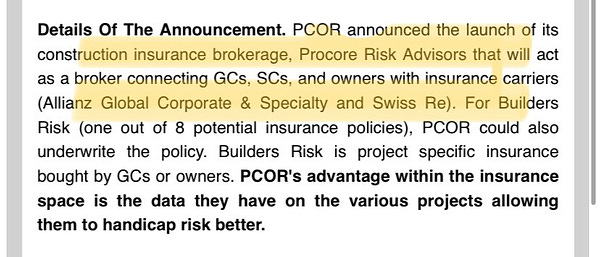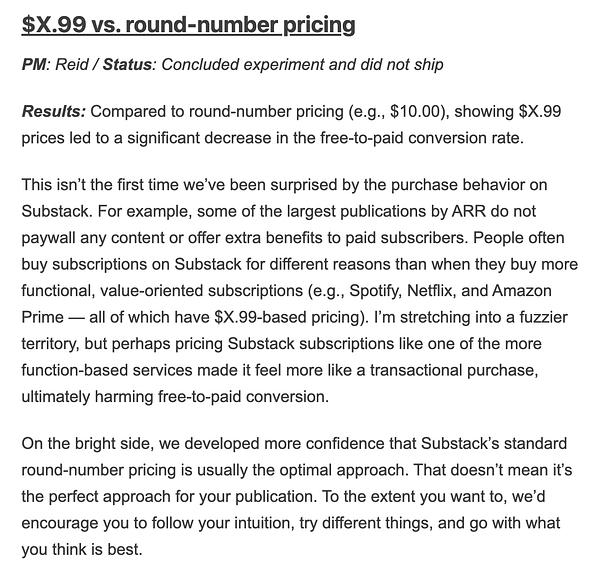The Expansion Playbook with Sarveen Chester
Former Head of Expansion at Revolut, Dija, Gopuff and Shares provides insights into market expansion and authorisations
Hey friends 👋! Join over 2,100 founders, operators and investors for Missives on software, fintech and GTM strategy by subscribing here:
To the regular readers, if you enjoyed today’s piece please share it with friends, comment and subscribe! Also let me know if you'd like to see a new section or have any feedback generally!
Today we’re speaking to Sarveen Chester, advisor and operator, and former Head of Expansion at Revolut, Dija, Gopuff, and Shares. Chester is as sharp a mind that one can find on Expansion and Authorisations - my sincerest gratitude for his insights.
Akash: Chester, you’ve led expansion for companies across verticals but primarily consumer. Can you give us an insight into how an Expansion team works on a day-to-day basis and the key functions within the Expansion team?
Chester: Most people think that Expansion teams just do growth and user acquisition. While that may be the case in most B2B startups, it wasn’t the case in B2C companies that I’ve worked at. In my view, Expansion covers the most breadth - from legal to operations to hiring to growth and communications - it’s basically starting the company, sometimes from scratch, in new geographies and verticals. Expansion can be both geographic expansion, or product expansion, or both.
The Expansion teams I’ve led are trained to essentially be “franchisees” of the company and are very entrepreneurial in nature. Starting from zero most of the time, but hopefully, also leveraging past lessons and systems put in place to shorten the time to launch.
Akash: Assuming that the Expansion team is data-informed when it comes to prioritisation of markets, amount of resources required, sequencing, and so forth, can you tell us what kind of data you would use to drive your decisions?
Chester: This depends on several variables; the company you’re working in and it’s strategic priorities, the product-service offering, the customers, the potential for growth in that consumer segment and/or the geography, the resources made available. For example, in a fintech that’s doing peer-to-peer transfers, the decision-dependent data can be the inflow and outflow of remittance to and from that country, the potential for growth in using new technologies for remittance, etc.
Of course, the above are non-exhaustive and are just the ‘why’ the company should be expanding into specific geographies. It should also be complemented with the effort that it takes to launch there. Couple these factors on and x-y axis and you’d essentially arrive at a prioritisation model of high/low impact, and high/low effort classifications.
Akash: Naturally a big part of market launching is hiring the right GM/Country Launch Lead. When you are looking for GMs and Country Launchers, what are the criteria you are assessing for - is it an ability to hire talent from their network, an existing network with customers?
Chester: Again it depends on the stage of which company is at, and what its strategic priorities are. An early-stage startup that’s already embarking on international expansion - assuming it has already proven its problem-solution fit and product-market fit in its home market - would better appreciate a Country Lead/GM that has breadth of knowledge and experience, coupled with the willingness and openness to get their hands dirty whilst they have yet to hire their own country/regional teams. Whereas a later-stage startup/company might better appreciate a Country Lead/GM who may not necessarily be starting everything from scratch but would be a good person to maintain its position in the market and leverage on this person’s network to take it further.
That being said, it will inform the skills that are required in this person. Are they a strong problem-solver; stakeholder manager; and do they have the tenacity to break down walls when times may seem tough - especially if they are going to be physically separated from the HQ office and be based in their local jurisdictions.
Akash: Once a GM has ramped up, what are best practices for the split between resourcing at HQ versus local functions (e.g. customer success, marketing), channels of communication and reporting cadence, and management oversight on performance?
Chester: Again dependant on the company’s priorities. If the company has made a commitment to expand from EU to APAC, for example, aside from capital, it will need to significantly understand and dedicate time, energy, and human capital to winning in the region. Don’t expand into a country or a region if the plan isn’t to win - you’re just going to bleed resources unnecessarily. For example, for a company in EU/UK/US that wants to expand into APAC (or any other region, or even conversely, for that matter), might want to consider setting up a tech/product hub in a country in that region that they are expanding to - this hub would be fully dedicated to delivering the roadmap for that region so that the target region/country wouldn’t have to constantly rely, or even fight for, resources from HQ region to deliver on their roadmap.
As for management oversight, if you’re not in a regulated industry where there are prescribed governance and oversight models by the regulators, then it really depends on the company. Assuming there are no regulatory-prescribed governance and management models, then the company might want to consider either; centralised (where all countries/regions report directly to HQ where all decisions are made), or decentralised (where countries/regions have the right structures and resources in place to make their own decisions and deliver on their roadmap within the bounds of HQ), or a hybrid model where the regional and HQ teams have a “terms of reference” on what kind of decisions will be made in whichever power centres - this can be subject-matter centric or resource-centric or something similar.
Akash: Of course a big part of expansion is the regulation and authorisations required to operate in new jurisdictions. Given the complex and fragmented landscape across Europe, how early do you advise founders to begin applying for the relevant licenses, even if that comes at significant cost/time before they are live in those markets?
Chester: Assuming the question is hinting at fintechs/financial services, it begins with understanding and meeting your product-market fit. Ensure you’ve met your product market fit in home country before expanding to new countries and applying for regulatory authorisations there. Meeting and proving these would be helpful down the line when you start your regulatory applications process.
Now, even before that, you’d need to decide what you want to launch as a product-service within the definitions of the regulatory boundaries. i.e., don’t go on and apply for anything and everything within the regulatory permissions if you have no intention to launch a product-service under those specific definitions - it will only give the impression to the regulators that you don’t know what you want and you don’t have a cohesive business strategy and roadmap.
Understanding the permissions you want based on your product-service offering from Day 0 of your grant of authorisations will then help you work backwards and focus. i.e., in certain cases, the more “sub-classes” of permissions you apply for, the more you need to demonstrate robustness in governance, operational readiness, and processes and procedures in place for effective guardrails.
Assuming you already zeroed in what you want to launch and what the corresponding regulatory permissions that are required for those identified product-service offering, then you should engage with the regulators and local experts at the soonest. This gives you a good understanding of how long that specific application might take, what is required as part of that application, etc, and you can effectively size the problem and timeline from there.
Of course, as you mentioned, certain services are still fragmented from a regulatory perspective, so it sometimes becomes a chicken and egg situation - do you wait for the regulators to clarify their regulatory regime for that specific product-service before you build your product, or…?
Akash: When scoping out the authorisations needed to offer pan-European propositions, founders often grapple with securing licenses from regions like Estonia and Lithuania, or from stricter markets like the Netherlands. How do you advise founders to weight the costs against the benefits?
I wouldn’t go as far as to say that certain countries have “laxer” regimes for pan-European licensing (e.g., the MiFID licensing for Trading services). There are a few factors to consider, including but not limited to: do you apply for a licence in your home state or another EU member state which will still allow you to passport your services throughout the EU (including into your home state); do the regulators have a robust regime in place without compromising nor stifling innovation in the financial services sector; what kind of extra-ordinary ongoing reporting and maintenance requirements has this specific local regulatory imposed on their supervised-institutions which will then possibly mean more build effort for the company; the costs involved in the application process and the post-authorisation process (i.e., the maintenance of, perhaps, a regulatory-required local team, office, etc); the regulatory capital that is required (i.e., are you more willing to lock in “dowry” with the regulators as opposed to deploying that for marketing or hiring, etc.).
Interesting Reads
Amplifying Our Humanity Through AI
Reid Hoffman has been at the vanguard of the mobile and cloud technology waves, and is now well positioned as one of the foremost thinkers and innovators in AI; in his latest book, Reid pairs up with GPT-4 to present a nuanced perspective on the transformative potential of LLMs in the short and medium-term.
Breaking Down The Latest Battery Ventures Cloud Software Spending Report
Battery’s latest IT spending survey has interesting data on the resilience of budgets (>$500m annual spend), the headwinds for self-procurement and PLG motions, and the degree to which the Manufacturing industry procures software from tech companies and bottom-up motions.
Buck makes a compelling argument for why the current malaise is analogous to 2001 and not 2008, namely the varying conditions in software penetration, cloud adoption, and proliferation of Zombie companies.
Nobody Knows The ROI Of Their CSMs
David Apple presents frameworks for calibrating the value generated from CSMs and how to use data to derive the right headcount.
The Real Competition Is The Water
Ravi Gupta calls out the complacency plaguing too many companies with lengthy runways.
Ellison’s Gospel, The Evolution of Salesforce, and the (AI Driven) Re-Bundling of Software
Arda Capital analyse why Salesforce’s Cloud Data Platform has finally found the catalyst for adoption, Larry Ellison’s vision of a single data model becoming pervasive, and why AI presents an existential threat to point solution software.
Nathan Baschez draws a helpful analogy between LLMs and CPUs, providing a lens through which we can forecast the market structure of LLMs.
#54: Long Weekend Retro: The When and How of VC Timing
Studying the examples of Airbnb, Snowflake, Shopify, we can infer the unique, non-linear trajectories behind some of venture’s greatest hits.
Tweets












